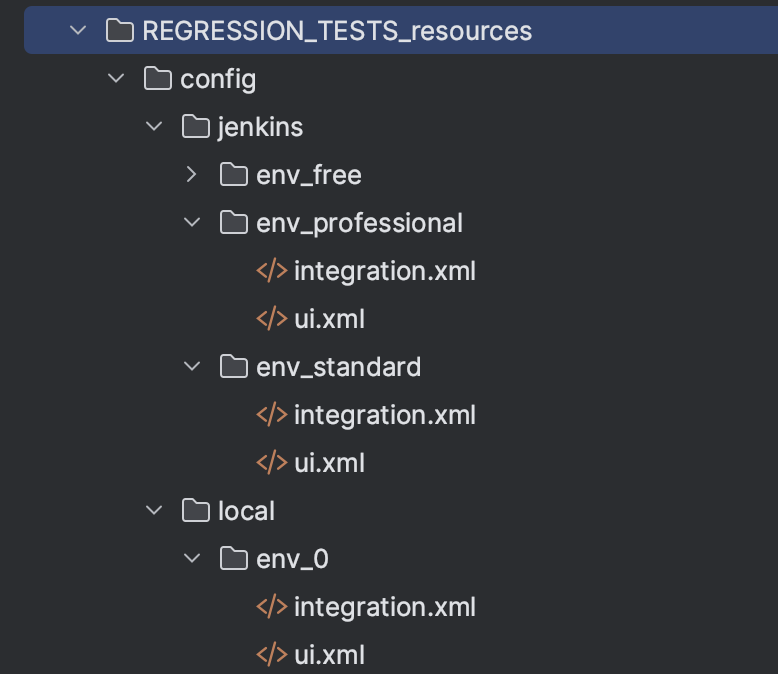Parallel Execution - TestlumFramework/Testlum GitHub Wiki
Parallel test running is your unique opportunity to significantly increase the speed of your regression, provided by Testlum. Our approach makes it possible to test not only the UI part of your product but also allows simultaneous parallel testing of your API and all available integrations. You don't even have to change your testing scenarios. Each test is running in an isolated environment, so we guarantee that parallel execution will not affect the final result of the test.
config folder should be presented by default in the TEST_resources project. It stores all configuration files in folders with customizable environment names. Within each environment folder, ui.xml and integration.xml files have to be placed for parallel testing setting up.
parallelExecution- tag which includes or excludes parallel testing operations (true or false).<parallelExecution>true</parallelExecution>
environments- tag where you write configurations for your environment. For parallel testing, at least two environments should be configured and enabled.<environments> <env folder="env_0" enabled="true" threads="1"/> <env folder="env_j_0" enabled="false"/> <env folder="env_1" enabled="true"/> </environments>
🧾 Attributes
| Attribute | Type | Required | Default | Description |
|---|---|---|---|---|
| folder | String | true | - | Unique folder name where ui.xml and integration.xml files are stored |
| enable | Boolean | true | false | A boolean value that enables or disables environment usage |
| threads | Integer | true | 1 | Attribute to specify the quantity of threads |
⚠️ WarningFolders with environments must be located in the
configfolder and containui.xmlorintegration.xmlor both files!
Example Structure:

⚠️ WarningIf use two or more environments, they must contain the same settings: (the same number of ui.xml and integration.xml files, the same settings inside the files with the same aliases, only MANDATORY with different ports or hosts).
For mobile configuration must be different Appium servers and udid capabilities or use the Browser Stack.